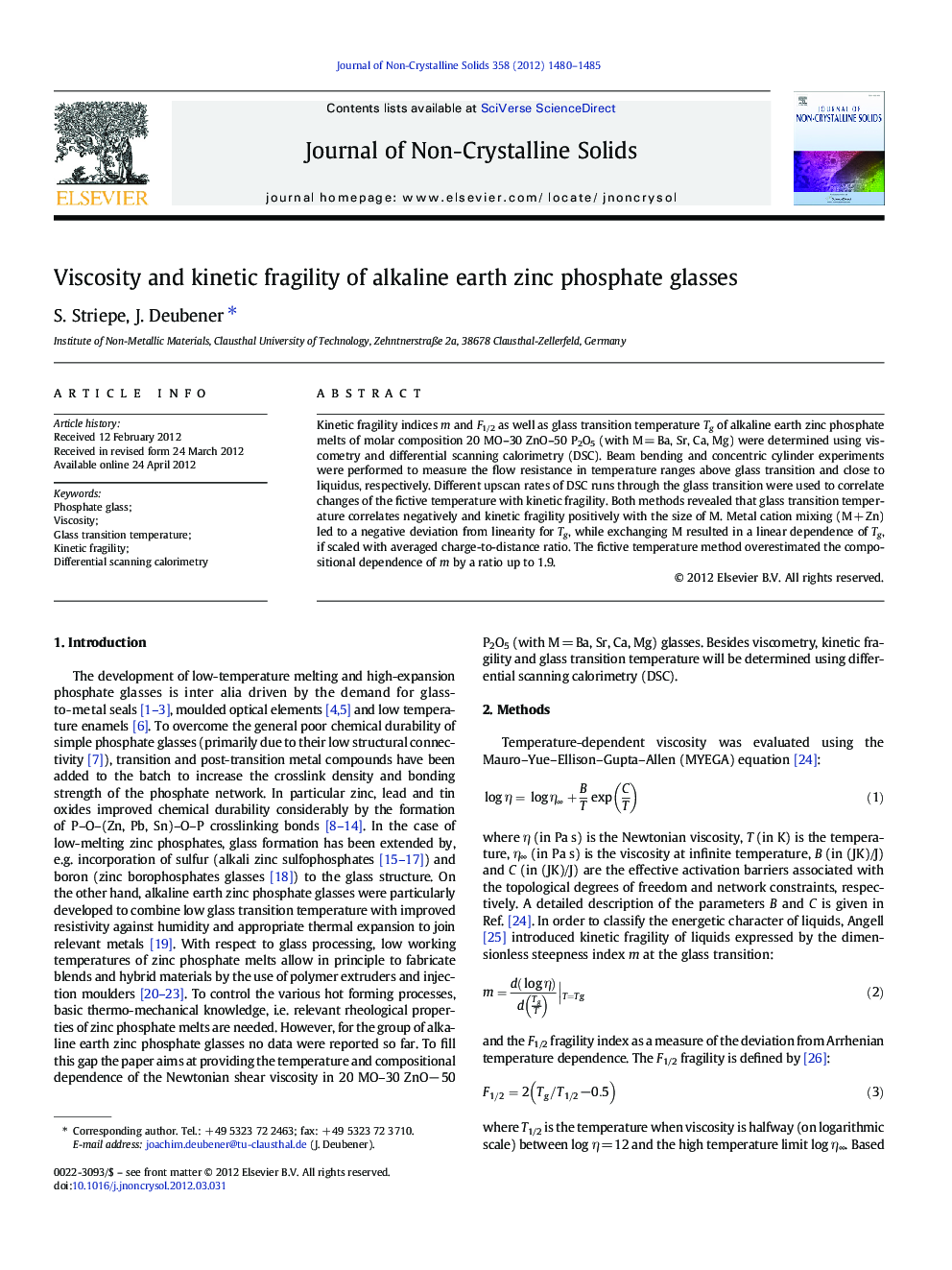| Article ID | Journal | Published Year | Pages | File Type |
|---|---|---|---|---|
| 1481800 | Journal of Non-Crystalline Solids | 2012 | 6 Pages |
Kinetic fragility indices m and F1/2 as well as glass transition temperature Tg of alkaline earth zinc phosphate melts of molar composition 20 MO–30 ZnO–50 P2O5 (with M = Ba, Sr, Ca, Mg) were determined using viscometry and differential scanning calorimetry (DSC). Beam bending and concentric cylinder experiments were performed to measure the flow resistance in temperature ranges above glass transition and close to liquidus, respectively. Different upscan rates of DSC runs through the glass transition were used to correlate changes of the fictive temperature with kinetic fragility. Both methods revealed that glass transition temperature correlates negatively and kinetic fragility positively with the size of M. Metal cation mixing (M + Zn) led to a negative deviation from linearity for Tg, while exchanging M resulted in a linear dependence of Tg, if scaled with averaged charge-to-distance ratio. The fictive temperature method overestimated the compositional dependence of m by a ratio up to 1.9.
► Alkaline earth zinc phosphate glasses were studied by viscometry and DSC. ► Tg of mixed metal phosphate glasses was by 55 K lower than Tg of pure end members. ► Kinetic fragility correlates positively with the size of the alkaline earth cation. ► Tg depends linearly on averaged charge-to-distance ratio for binary metal mixtures. ► DSC can serve as fast method to determine kinetic fragility of phosphate glasses.
